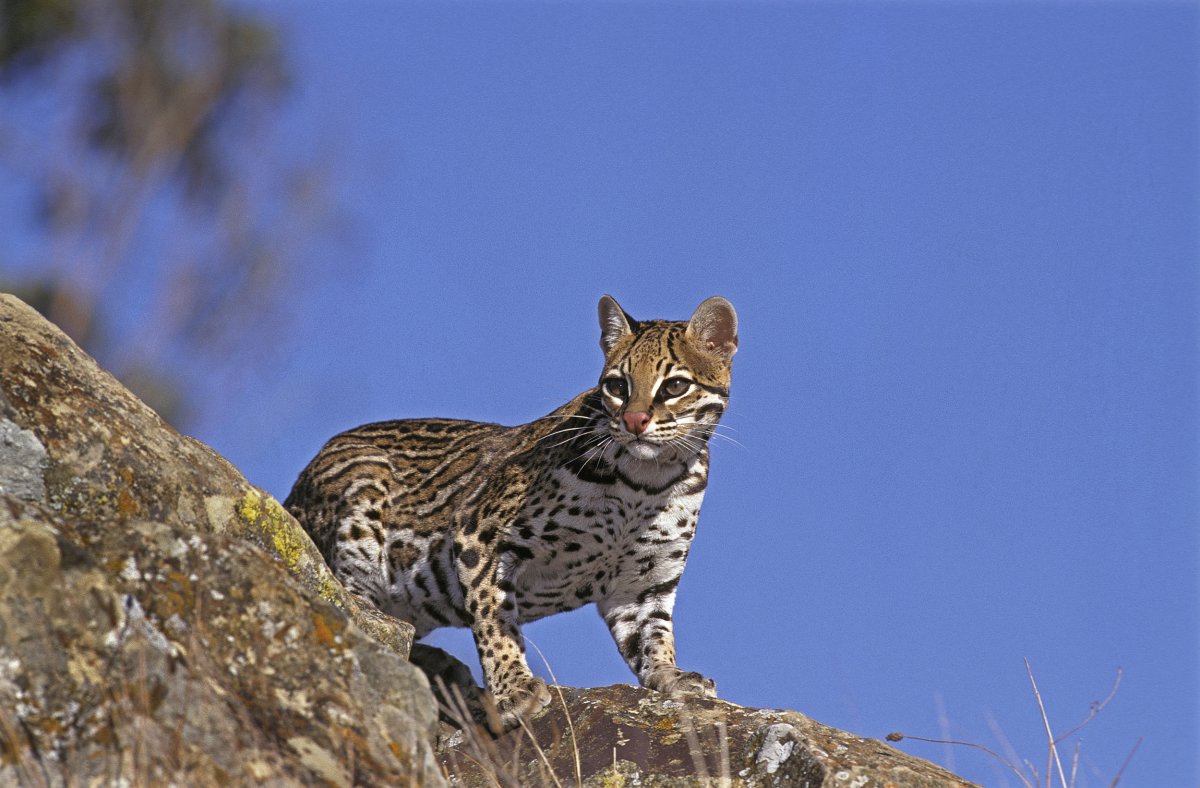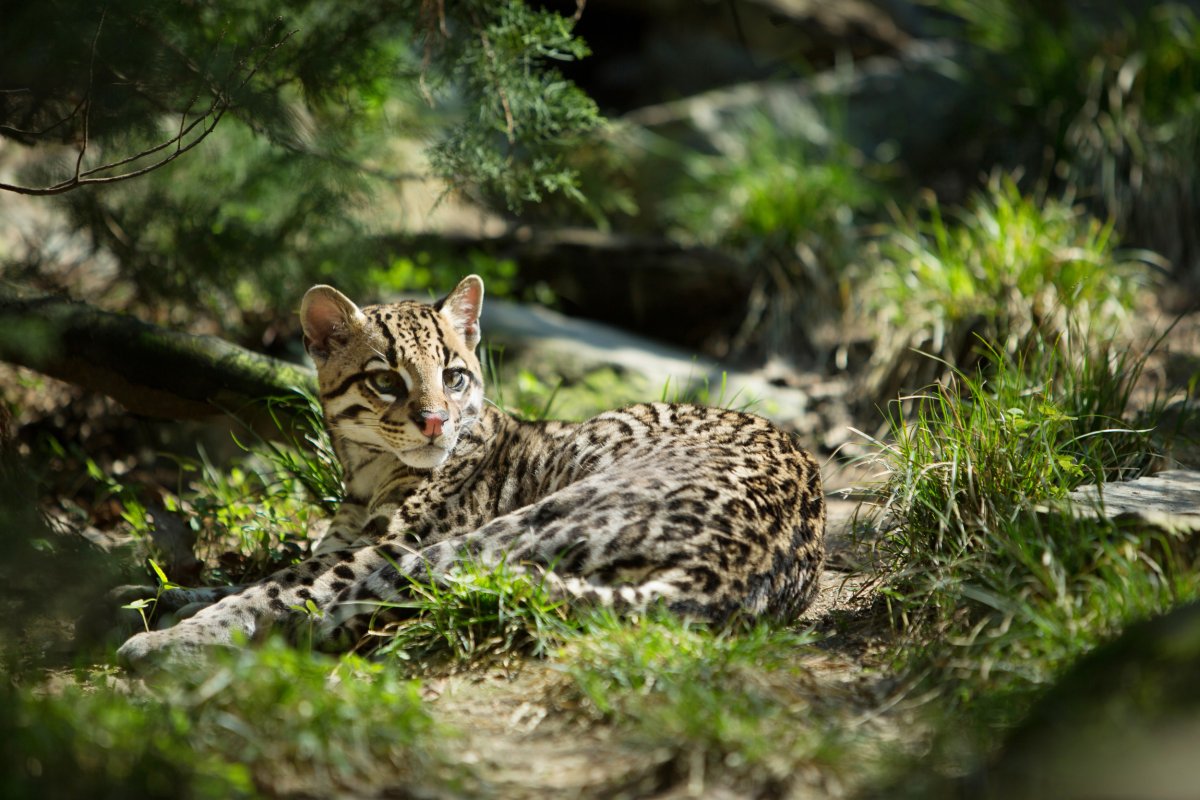There might be more ocelots in Texas than first thought, scientists have said.
An unfortunate ocelot was found to have been hit by a car in 2021 in Hidalgo County—just south of Linn, Texas—about 50 miles from Texas' known population of the wildcats, mystifying conservationists.
A DNA test on the dead one revealed it was related to wild ocelots native to the U.S.-Mexico borderlands region but had more unique genes than the rest of them, implying that the range of the animals might be wider than originally thought.
"The results suggest that this cat possibly occupies a region of South Texas not yet known to ocelot researchers," Sharon Wilcox, expert in ocelot conservation and senior Texas representative for Defenders of Wildlife, said in a statement. "Hidalgo County may have more ocelots present in its more remote sections where appropriate habitat and access to prey exists."

The small wildcats are about twice the size of a domestic housecat, measuring as long as 3.5 feet and weighing up to 35 pounds. They were once found widely across Texas, but the state's ocelot population is now very small and federally endangered, with some estimates suggesting that fewer than 100 remain in the wild.
"Historically, ocelots roamed the state of Texas and throughout portions of the southwestern United States. Much of the population was eradicated by predator control efforts in the 19th and early 20th centuries, including trapping, hunting, and poisoning. This resulted in the ocelots' range retracting southward, with the cats only remaining in the U.S. today in South Texas," Wilcox told Newsweek.
These ocelots are primarily found in two isolated populations in the southern part of the state, mainly on protected lands such as the Laguna Atascosa National Wildlife Refuge. Texas ocelots are dependent on a thorn-scrub habitat—a dense, shrubby environment that provides them with the shelter and hunting grounds they need. However, this habitat has been largely fragmented due to agricultural development, urban expansion and infrastructure projects, which have significantly limited their range and movement.
"Texas is home to the only remaining breeding population of wild ocelots in the U.S.," Wilcox explained. "These cats are designated as endangered by the U.S. Fish and Wildlife Service, and continue to experience significant pressures that threaten their survival. The pressures that ocelots experience today are quite different than what they experienced historically. Today, widespread development creates unintentional pressures that threaten the survival of ocelots. Sprawling development destroys, degrades and fractures ocelot's native habitat and creates hazards on the landscape."
"In South Texas, ocelots rely on the thornforest for denning and hunting. It is crucial the remaining brush stays in place," Tom deMaar, a former Gladys Porter Zoo veterinarian and member of the Board of Directors for the Friends of Laguna Atascosa National Wildlife Refuge, said in the researchers' statement.
The finding of the ocelot so far away from where they are known to be located—and the fact that the area near where the dead ocelot was found is the same thorn-scrub ecosystem that the critters require to thrive—implies that there may be more ocelots living in Texas that conservationists don't know about.
"It makes you wonder; how many more ocelots are hidden out there? This is the first time there's been confirmed evidence of an ocelot outside its range," deMaar said.

As well as habitat loss and fragmentation, the primary threats to Texas ocelots include road mortality and potential genetic inbreeding due to isolated populations. Vehicle strikes are a significant concern as ocelots often cross roads that intersect their already-limited habitat.
"Ocelots are holding their last stand against human development occurring at unprecedented rates in South Texas. These cats need wild spaces to roam, and this recent evidence gives us hope that ocelots are holding on in the more remote corners of this region. The challenge before us is to protect remaining habitat while restoring it in places that can facilitate potential expansion and connectivity between ocelot groups in Texas," Wilcox said.
"Ocelots are emblematic of this region, and their struggle to survive in the wildest margins represents a larger struggle to preserve native landscapes in South Texas. With open spaces rapidly disappearing, the plight of the ocelot speaks to far greater issues concerning the loss of wild places throughout Texas."
Do you have a tip on a science story that Newsweek should be covering? Do you have a question about ocelots? Let us know via science@newsweek.com.
Uncommon Knowledge
Newsweek is committed to challenging conventional wisdom and finding connections in the search for common ground.
Newsweek is committed to challenging conventional wisdom and finding connections in the search for common ground.
About the writer
Jess Thomson is a Newsweek Science Reporter based in London UK. Her focus is reporting on science, technology and healthcare. ... Read more
To read how Newsweek uses AI as a newsroom tool, Click here.








